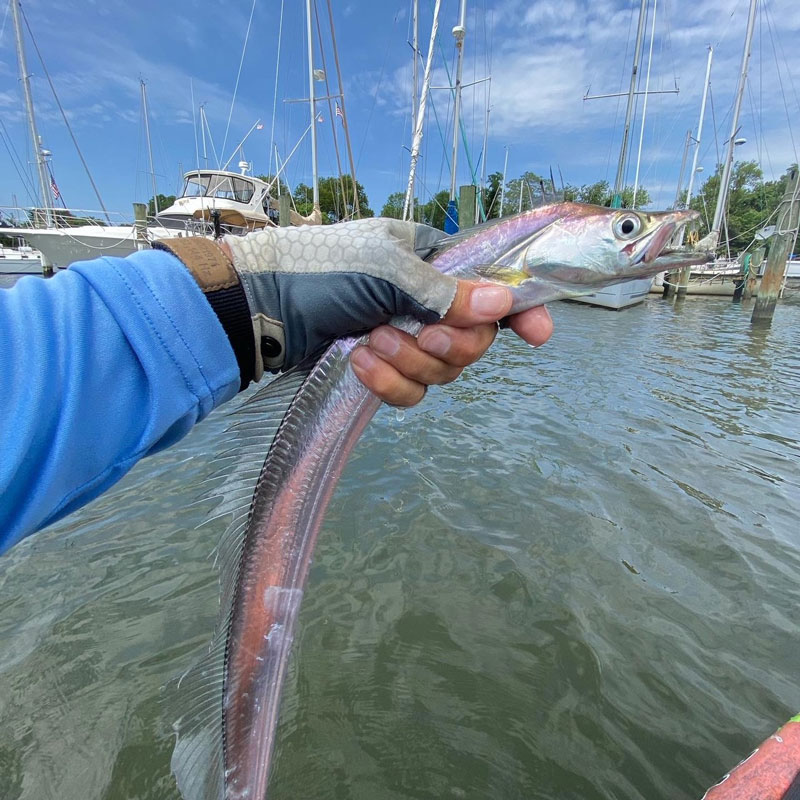As the summer sets in and waters warm up, an interesting returning visitor to our Bay in recent seasons has been the long, skinny, indisputably weird ribbonfish (also known as cutlassfish). Many are taken by trollers but casting and retrieving lure on light tackle for these crazy critters is a ball. Here's how the drill goes.

- Choose a lure that you can run fairly deep (10-plus feet) because these fish are often found down towards bottom in the Bay and its tribs.
- Choose a lure that’s bite-proof. Cutlassfish have a gnarly set of chompers, and will slice most soft plastic in half with ease. Metal spoons, hard plastic plugs, and bite-proof plastics will all do the trick.
- Cast towards structure like deepwater docks, and work channel edges or drop-offs. When you’re in an area with moored sailboats be sure to cast near them, too, because sometimes these fish seem to like hiding under their deep keels.
- Make your retrieve fairly slow and steady. Lots of erratic action doesn’t draw more strikes in most cases, and can make it harder to feel their sometimes-subtle bites.
- If a fish hits and the hook pulls free after a few moments, reel like crazy. Ribbons are so long and skinny that if they stop fighting for a moment you’ll feel zero resistance, which can fool you into thinking the hook has pulled. But if you maintain tension you’ll likely discover that the fish is still on the line.
And remember, despite their odd eel-like appearance, these fish are actually awesome on the dinner plate. You'll get long, skinny fillets, but if you know what to do with them you're in for a great meal. The meat is very light, not fishy, and comparable to flounder. The skin is edible and helps hold the filets together. It can be eaten raw, pan fried, or baked into stuffed ribbon rolls. The centerline bone filets right out, and then the ribs can be frozen for bait. For a treat, try this:
- Fillet the fish then lay the fillets out meat-side up.
- Slather a thin layer of crab imperial on top.
- Roll up the fillets, then stick a toothpick through the side of the roll to hold it together.
- Bake 15 to 20 minutes, then enjoy!